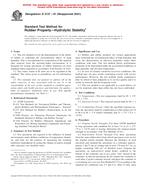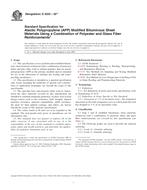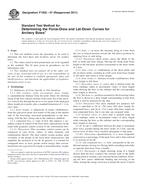1.1 This test method covers the determination of critical crack-tip opening displacement (CTOD) values at one or more of several crack extension events. These CTOD values can be used as measures of fracture toughness for metallic materials, and are especially appropriate to materials that exhibit a change from ductile to brittle behavior with decreasing temperature. This test method applies specifically to notched specimens sharpened by fatigue cracking. The recommended specimens are three-point bend [SE(B)] or compact [C(T)] specimens. The loading rate is slow and influences of environment (other than temperature) are not covered. The specimens are tested under crosshead or clip gage displacement controlled loading.
1.1.1 The recommended specimen thickness, , is that of the material in thicknesses intended for an application. Superficial surface machining may be used when desired.
1.1.2 For the recommended three-point bend specimens [SE(B)], width, , is either equal to, or twice, the specimen thickness, , depending upon the application of the test. (See 4.3 for applications of the recommended specimens.) For SE(B) specimens the recommended initial normalized crack size is 0.45 [<=] o/ [<=] 0.55. The span-to-width ratio ( / ) is specified as 4.
1.1.3 For the recommended compact specimen [C(T)] the initial normalized crack size is 0.45 [<=] o/ [<=] 0.55. The half-height-to-width ratio ( / ) equals 0.6 and the width to thickness ratio is within the range 2 [<=] / [<=] 4.
1.2 This standard does not purport to address all of the safety problems, if any, associated with its use. It is the responsibility of the user of this standard to establish appropriate safety and health practices and determine the applicability of regulatory limitations prior to use.
Product Details
- Published:
- 06/10/1999
- Number of Pages:
- 12
- File Size:
- 1 file , 210 KB


